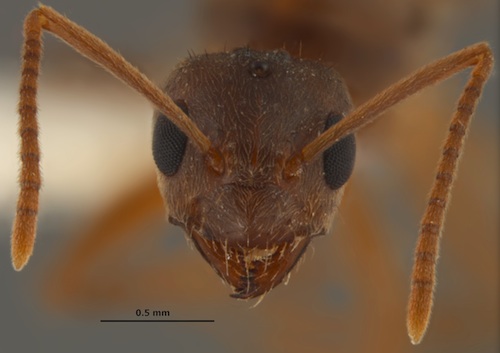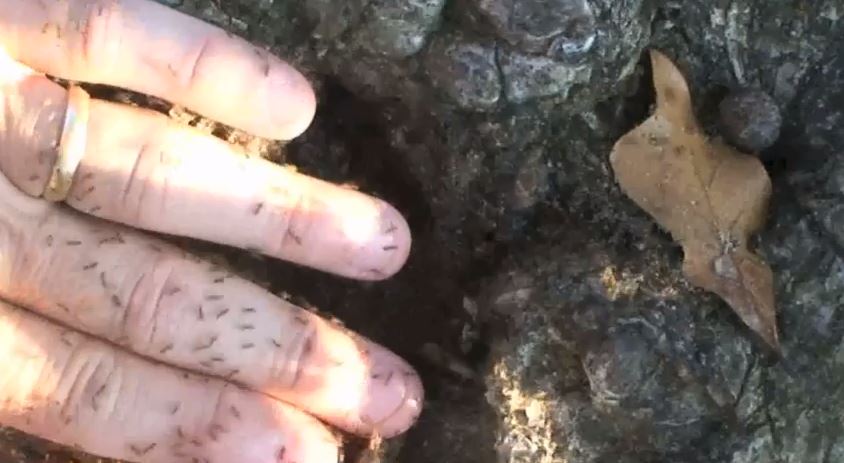Why 'Crazy Ants' Swarm Inside Electronics

Exterminator Mike Matthews got the call because the home's air-conditioning unit had short-circuited. Why an exterminator for a problem with an appliance? Because of the crazy ants.
Matthews has seen crazy ants disable scores of air-conditioning units near Austin, Texas, where the invasive creatures have been a real headache. The ants swarm inside the units, causing them to short-circuit and preventing them from turning on. Often the switches inside them need to be replaced, thanks to the ants, said Matthews, who works for the Austin-area pest control business The Bug Master.
"When you open these things up, you see thousands of the ants, just completely filling them up," Matthews said.
The ants first appeared in the United States in 2002 but have become more of a menace in the past few years, spreading to many areas of the Gulf Coast, particularly Texas and Florida. The ants are obnoxious because they reproduce in large numbers, sometimes outnumbering all other ants 100-to-1. That's a problem since ecosystems depend on a wide variety of ants to perform different tasks; domination by one species is highly unusual, said Edward LeBrun, a researcher at the University of Texas. As the ants have advanced into new habitats, they've had the annoying habit of swarming inside electronics, like air conditioners and farm equipment likes pumps and occasionally destroying them, LeBrun told LiveScience.
But why are these insects attracted to these devices in the first place? [Image Gallery: Ants of the World]
Destroying electronics
One reason is that crazy ants are always looking for cavities to nest in — unlike most ants, they don't excavate their own holes and tunnels, beyond minimal expansion, LeBrun said. That is also the reason they move into people's houses, nesting in any area with protected holes and cavities, such as the insides of walls and in basements and crawlspaces. Their small size, less than an eighth of an inch in length, allows them to crawl inside cellphones, computers and appliances, which all are home to protected cavities and are "just great" for these ants, Le Brun said. Most commonly, they swarm inside sheds and pumps in rural areas, which has been a problem for industries in Texas and elsewhere along the Gulf Coast, he added. When the crazy ants enter these devices their bodies can create connections between electrical contacts, which can lead the circuits to short out and electrocute the ants. This causes them to release an alarm pheromone, a scent ants use to communicate that they are "under attack," likely attracting the ants' kin to come and fight, LeBrun said. This creates a vicious cycle that can leave appliances broken and full of dead (and angry) ants.
Sign up for the Live Science daily newsletter now
Get the world’s most fascinating discoveries delivered straight to your inbox.
Their sheer abundance also adds to their destructive power. In one case, the ants quickly spread to 90 out of 150 air-conditioning units in an apartment building in Waco, Texas, Matthews said. That infestation took about two months to control, he added.
They're commonly known as the tawny crazy ant, so-called because of their color and their "herky-jerky" pattern of foraging — or "going everywhere at once," as LeBrun put it. This makes them extremely annoying for homeowners. It also doesn't help that the ants aren't attracted to one commonly used ant bait. So exterminators have to use different kinds of baits, as well as liquid insecticides, Matthews said.

Tawny crazies
Crazy ants first showed up near Houston in 2002, but they weren't indentified until last year as Nylanderia fulva, a species that hails from northern Argentina and southern Brazil, according to a study in PLOS ONE. Their identification took so long in part because their workers are identical to a related species called Caribbean crazy ants, which showed up in Florida and were initially confused for the tawny crazy ants. They were previously known as Rasberry crazy ants, named after the exterminator Tom Rasberry who first recorded their presence near Houston. [Alien Invaders: Destructive Invasive Species]
In perhaps a good bit of news for Southern residents, the crazy ants can't spread quickly on their own, and rely on humans to spread them via infested materials like rotting wood, LeBrun said.
But in areas where crazy ants are found, they often drive out native ants, leaving only other invasive ants behind. That's because most native ants tend to have larger bodies, whose tunnels the crazy ants can more easily invade (ants can't penetrate ths nests of ants with smaller bodies).Most invasive ants tend to be smaller.
In some places, the crazy ants have also driven out invasive fire ants, which are slightly bigger. In many areas where this has happened, residents actually miss the fire ants, which have painful stings but generally leave people alone unless their large mounds are disturbed, LeBrun said. But not so with the crazies. Luckily, the tawny ants don't sting, and their bites aren't very painful, he added.
Email Douglas Main or follow him on Twitter or Google+. Follow us @livescience, Facebook or Google+. Article originally on LiveScience.com.











